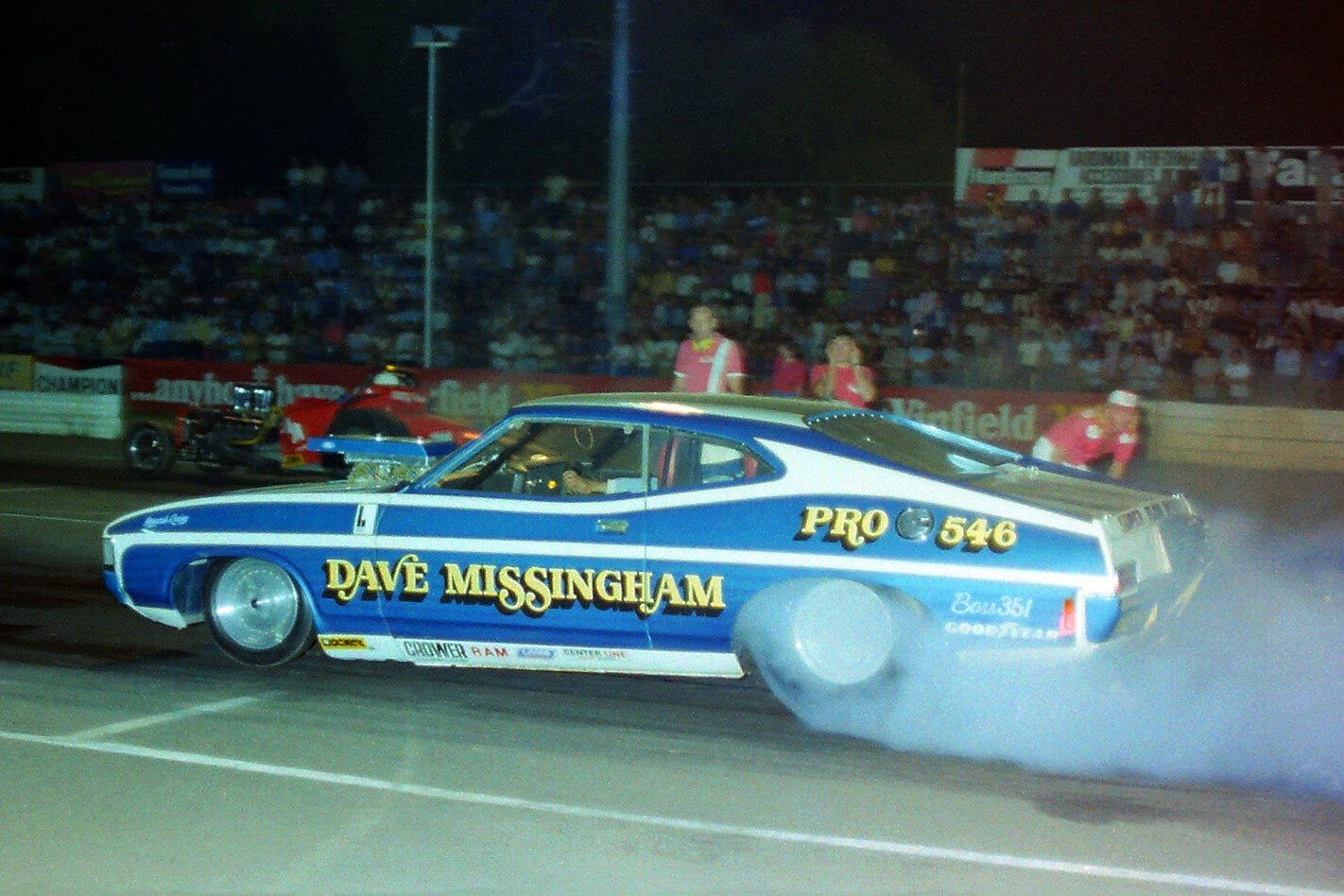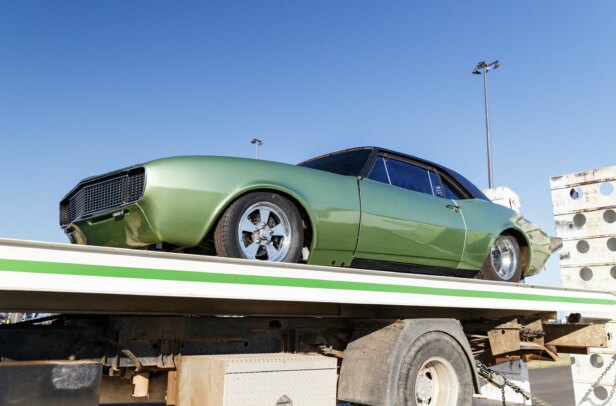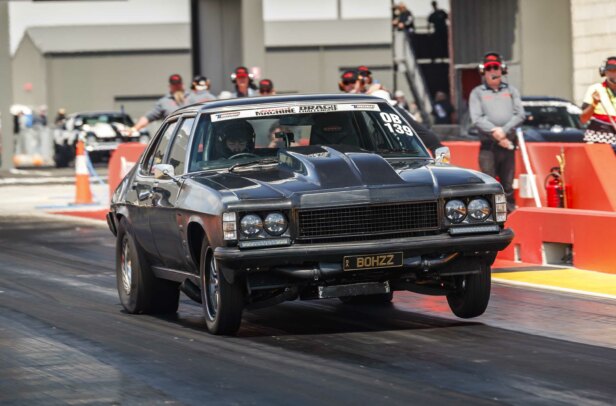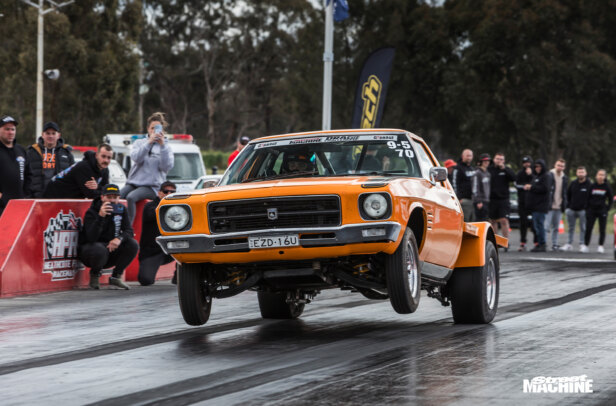We bid farewell to Dave Missingham, one of the founding fathers of Aussie Pro Stock racing
FOR Sydney-based Pro Stock racer Dave Missingham, the defining year of his racing career was 1987, and the most significant day of that year was 14 March at Heathcote Park Raceway. This was the year that Missingham would realise his peak racing achievement: winning the points-based Australian Pro Stock Championship. But on that particular evening at Heathcote, during the first round of racing his Cortina appeared to lock up a rear brake at over 140mph in the braking area. The car turned hard right and barrel-rolled numerous times. It was never going to be good.
Missingham was unconscious in the wreck when rescuers arrived. He died on the way to hospital in Bendigo, but was revived by paramedics and was admitted with critical head injuries as well as a broken collarbone, nose and wrist, and badly lacerated hands. His helmet was split from front to back.
The race meeting was abandoned.
The mangled wreck of Dave’s Cortina after his accident, Heathcote Park Raceway, 14 March 1987
Missingham remained in an unconscious state for 22 weeks, but despite being out of action for nearly half the ’87 season, his points lead before his accident meant he still won the 1987 Australian Pro Stock Championship.
At one time, on medical advice that he could not remain alive without mechanical assistance, his life support system was turned off, but he miraculously hung on. His family – wife Dianne, son Wayne and daughter Simone – sustained a round-the-clock vigil over him, talking to him, touching him and giving him different flavoured milkshakes from a nearby fast food outlet, until one day he opened his eyes.
Dave in action in his TE Cortina at Surfers Paradise, 10 June 1984
Despite long-term physiotherapy, he never fully recovered his ability to walk and remained largely wheelchair-bound for the remainder of his life. Yet he still had his acute sense of humour and the knowledge of how to run a fast race car, and would often chide Wayne, who took up the family’s racing, on his engine building or other aspects of his vehicle’s preparation.
Dave began motor racing on the circuits in the late 1960s, competing in a Falcon and later a Lotus Cortina in Improved Production competition. In the 1970s his growing part-time engine-building business began to bring him drag racing customers, and that led to passes along the quarter-mile, which drew him into major competition with a two-door XA Falcon, debuting in B/Gas in June 1977.
With that car he set the national B/G record, which remained in his name for three years, and took his first steps into the premier Pro Stock category. Unable to get the Falcon down in weight enough to be competitive, Missingham instead built a TE Cortina Pro Stocker, incorporating all the latest gear.
It regularly racked up successes: runner-up at the ’84 Nationals, winner at the 1984 Grand Finals and a string of Pro Series round wins. In February 1986 it made the quickest and fastest Pro pass in the nation at 8.83 seconds and 152mph. Then came that fateful 1987 night in Heathcote.
“I’m going to miss Dave badly,” says old friend and racing mate, Ben Gatt. “We knew each other for over 40 years. I crewed with him and bought my XA two-door [which he still races] from him. He knew how to build a tough race engine and prep a car like no one else. He was one of my best mates.”
Fellow Sydney racer Joe Polito also has great memories of Missingham. “Dave started racing in Pro Stock a couple of years before me. I started building a TD Cortina and when Dave saw it he decided to build his TE because he liked the idea of the smaller car so much.
“In those days racing was a lot more relaxed. We all wanted to win, of course, but after a race we’d all sit around and have a few beers and socialise. It wasn’t a case of having to win on Sunday to be able to pay the mortgage on Monday.
“In early 1987 they were paying us absolute peanuts. We protested, but you know promoters, they didn’t want to listen. We had a meeting in my workshop, with Dave, Fred Dudek and Roy Stivala, and we decided we weren’t going to go to the next race meeting unless they improved the offer. The Victorian racers then did the same.
“Then one of the Victorians announced that he was going to go to Heathcote, and he had all these excuses and reasons why. Then someone else broke ranks and said he was going to go. Dave was in the lead in the points at the time, so he decided he had to go, otherwise he might lose his lead in the championship. That’s how he came to be there at Heathcote when he shouldn’t have been.”
Polito’s reminiscences come just a few months after he himself rolled his Pro Stocker at Calder. “I’ve been racing since 1971, and I get right near the end of my career and suddenly over my car goes,” he says. “I found out that you’re never properly free of the risk of this sort of thing happening. It’s all so quick that there’s nothing you can do. It was a sad day when Dave crashed, and I understand now something of what he went through.”
Dave Missingham gave up the unequal struggle that he had sustained for 30 years on 20 June, passing away from pneumonia aged 71. He will be fondly remembered and sadly missed.
ICON IN THE MAKING
The two-door XA Falcon that took Dave Missingham to the front ranks of Pro Stock came from Canberra racer Peter Pulford, and had been given a brand new bodyshell. Dave wanted to run it in Pro Stock, but only three months after his first rebuild, the rules were changed, leaving it outdated. It was eligible for B/Gas though, where it set the national records and won some major events.
But eventually Dave gave it another major rebuild, putting a full chassis through it and knocking out a lot of weight. With a 355ci Boss block and all the trimmings, the car became a bullet. Dave launched it at 8500rpm and took it to 9500rpm in each gear.
The XA was to take Dave to a handful of wins, but its 9.42-second best was short of his desired 9.20s, so at the end of 1982 the car was earmarked for replacement.
Dave sold it to Ben Gatt, who has raced it ever since. With a blown 351 now under the hood, it still takes him regularly into the low sevens in Supercharged Outlaws and Wild Bunch competition.
LIKE FATHER, LIKE SON
Drag racing ran in the Missingham family. Long before Dave suffered his accident, his son Wayne occupied that TE Cortina’s seat. His driving abilities were underlined when he ran it to an 8.83@152mph during qualifying for a Pro Stock Championship round in 1986, setting a new ET and terminal speed record for the class.
In 1991 he purchased John Honan’s US-built Trans Am Pro and a 352 Buick donk from Melbourne’s Peter Ridgeway. The car won major events at the 1991 Winternationals, the 1992 Winfield Triple Challenge and the 1992 Nationals.
In November 1992 Wayne appeared in a Santo Rapisarda-owned TF car at Eastern Creek Raceway. At the Grand Finals, the car ran off the end of the main straight, colliding heavily with the concrete safety barrier. It was a déjà vu moment for onlookers, but despite the rollcage being almost torn from the car, Wayne emerged with surprisingly minor injuries.
In 1994 Wayne piloted a new Mitre 10 Top Fuel car, which went as quick as 5.28 before he retired from the scene.
AUSSIE PRO STOCK
Launched at the beginning of 1974, Pro Stock was intended to find a place for the hard-headed old Super Stock racers who didn’t want to switch to handicaps. The rules were fairly restrictive, simply allowing existing racers in Modified Production classes to add a fibreglass bonnet, boot lid and guards for a simple swap across. Bodies had to be Australian-manufactured from 1967-on using engines originally available for that vehicle.
The rules appeared to provide options for Holden, Ford and Chrysler cars and by rights should have brought out a bunch of competitors, but after a small flurry of initial activity the numbers began to drop away. When Noel Ward debuted his XA Falcon in May 1975 and went 10.37@131mph at a time when the national records stood at 11.25 and 120mph, the bottom fell out of the bracket.
While US Pro Stock racers had options with big-block engines, the local authorities stuck firmly with small-block power, which made for a great disparity in performance. Under pressure from racers, they did gradually release the reins on structural limitations, and by the 1990s these vehicles were quick enough for the NHRA to use them as a model to establish its Pro Truck class.
These days the vast majority of Aussie Pro Stock vehicles use the swoopier two-door body shapes from the USA, but the small-block format remains firmly in place.




Comments